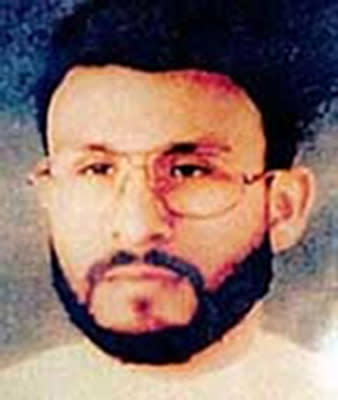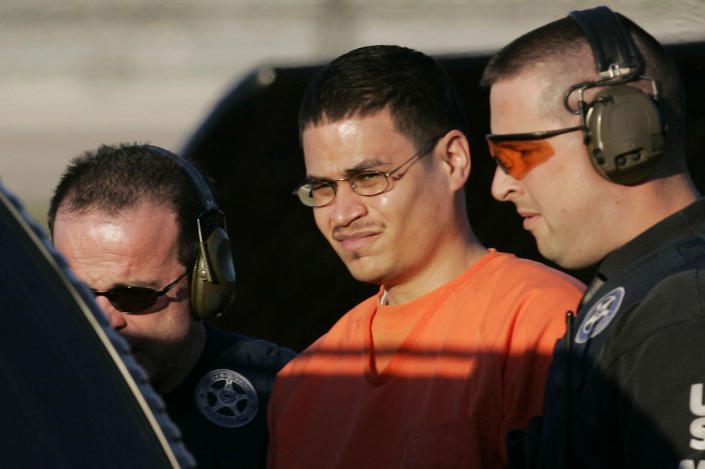Senate report finds CIA torture produced ‘fabricated’ intel and thwarted no plots
After waterboarding, 9/11 mastermind told interrogators what ‘he thought they wanted to hear’
After days of brutal interrogations, in which he was slammed against walls, slapped in the gut, and repeatedly waterboarded — “near drownings” that caused him to vomit — 9/11 architect Khalid Sheikh Mohammed told his CIA interrogators he was “ready to talk.”
The story he told in March 2003: He had sent an al-Qaida operative to Montana to recruit African-Americans for terrorist attacks inside the U.S. The alarming new claim sent FBI agents scrambling to find evidence of the plot, but they came up with nothing.
And for good reason: KSM later admitted he had fabricated the story — that because he was being subjected to such rough measures, he “simply told his interrogators what he thought they wanted to hear,” according to an internal agency cable quoted in the mammoth Senate Intelligence Committee report released on Tuesday by the panel’s chair, Sen. Dianne Feinstein.
The invented Montana plot is only one example of multiple wild-goose chases and other false leads that were produced by the CIA’s use of “enhanced interrogation techniques” — what President Barack Obama himself has labeled “torture” — in the years after 9/11, according to the 489-page Senate report.
“The methods in question ... regularly resulted in fabricated information,” the report states in its key findings. And the CIA itself at times was hoodwinked: “During the brutal interrogations, the CIA was often unaware the information was fabricated, leading CIA officers or contractors to falsely conclude that they were acquiring unique or actionable intelligence when they were not.”

For years, the CIA has said its resort to aggressive interrogations had “saved lives” — an assertion that was repeated today by six former top CIA officials in a joint op-ed published in the Wall Street Journal.
Noting the panicked atmosphere in the country after 9/11, with intelligence reports pouring in about a “second wave” of attacks and nuclear weapons supposedly being smuggled into the streets of New York City (“It felt like the classic ‘ticking time bomb’ scenario — every single day”), the former officials — including ex-directors George Tenet, Porter Goss and Michael Hayden — wrote that their approval of “enhanced interrogation techniques” had “led to the disruptions of terrorist plots and prevented mass casualty attacks, saving American and Allied lives.”
But the Senate report paints a very different picture: of a chaotic, poorly run program that was far more brutal than was previously known and whose details were concealed from some of the most senior members of the U.S. government.
U.S. ambassadors in some of the countries where CIA black sites were built were never told about what was taking place on their own turf. Then FBI Director Robert Mueller was denied access when he tried to get his own agents to question KSM.
Among those also initially kept out of the loop: Secretary of State Colin Powell. “The WH (White House) is extremely concerned that (Secretary) Powell would blow his stack if he were to be briefed on what's been going on,” a CIA lawyer wrote in July 2003.
Many of the techniques laid out in the report have been publicly known for years — forced nudity, sleep deprivation, dietary and temperature manipulation, wall slamming and, of course, waterboarding, a practice dating back to the Spanish Inquisition in which subjects are strapped down and doused with water to simulate the experience of drowning.
But the committee uncovered new details about how these techniques were actually applied in practice. The first “high-value detainee” taken to a black-site prison was waterboarded so many times that he lost consciousness at one point and “became completely unresponsive, with bubbles rising through his open, full mouth.”

At least five detainees in CIA custody experienced disturbing hallucinations during prolonged sleep deprivation — which in some cases went on for up to 180 hours. A CIA prison in Afghanistan (known as the Salt Pit but referred to as COBALT in the report) was described in CIA cables as a “dungeon” where hooded prisoners were kept in complete darkness and shackled in isolated cells with loud noise or music — and only a bucket to use for human waste. One of the detainees died from hypothermia after being left naked from the waist down.
But the report’s most controversial — and intensely disputed — finding is that the CIA program produced often unreliable intelligence and that agency officials repeatedly misrepresented its value to top policymakers inside the Bush White House, Congress and the American public. One of the high-value detainees who were supposedly providing vital intelligence, an Indonesian terrorist known as Hambali, later recanted most of what he had told his interrogators. Hambali “said he merely gave answers that were similar to what was being asked and inferred the interrogator or de-briefer wanted,” according to a CIA cable cited in the report.
Another supposed CIA success was the interrogation of Abd al-Rahim Nashiri, the suspected bomber of the USS Cole, who was waterboarded and had an electric drill threateningly waved by his skull by a guard. He was credited by the agency with coughing up intelligence about plots against foreign ships in the Persian Gulf. In fact, the committee found from internal cables that Nashiri had already provided that information to another country’s interrogators while he was in foreign custody.
The committee report examined 20 “case studies” in which agency officials had claimed they had thwarted plots or rounded up suspects based on aggressive interrogations. These assertions, the panel found, were “inaccurate and contradicted by the CIA’s own records.” For instance, the trail that led to the capture of KSM in Pakistan began not with the harsh tactics of the CIA but rather with FBI agents who used traditional “rapport building” techniques to get information from Abu Zubaydah before the rough stuff began. So too did the information that led to the arrest of Jose Padilla on charges that he had been dispatched to set off a nuclear “dirty bomb” inside the U.S. — another frightening claim the CIA made to justify its program and which some of the agency’s own officials soon concluded were wildly inflated, if not false.

“We’ll never be able to successfully expunge Padilla and the ‘dirty bomb’ plot from the lore of disruption,” one senior CIA official wrote in an October 2005 cable. “Even KSM says Padilla had a screw loose.”
Still, the CIA is standing its ground on one of the most contentious issues of the post-9/11 era. “It remains CIA’s position that detainees in the detention and interrogation program, including those subjected to EITs (enhanced interrogation techniques) did provide valuable and unique intelligence,” a CIA spokesman said on Tuesday.
Why then did the committee find differently? According to the agency, the Senate probe reached its conclusion “by working backwards from the known outcome in each example to show how it might have been achieved without the intelligence derived from interrogations involving EITs.” Added the spokesman: “That’s like doing a crossword puzzle on Tuesday with Wednesday’s answers key.”


